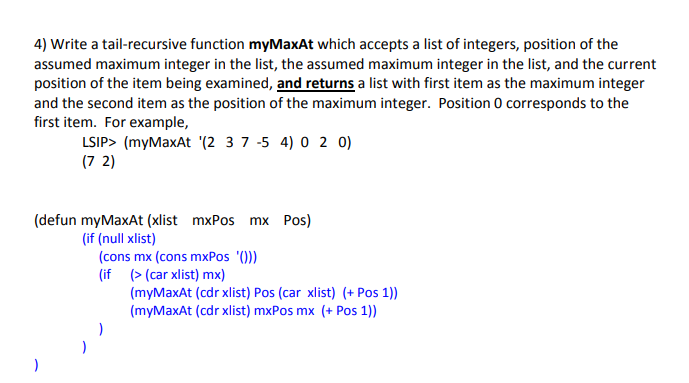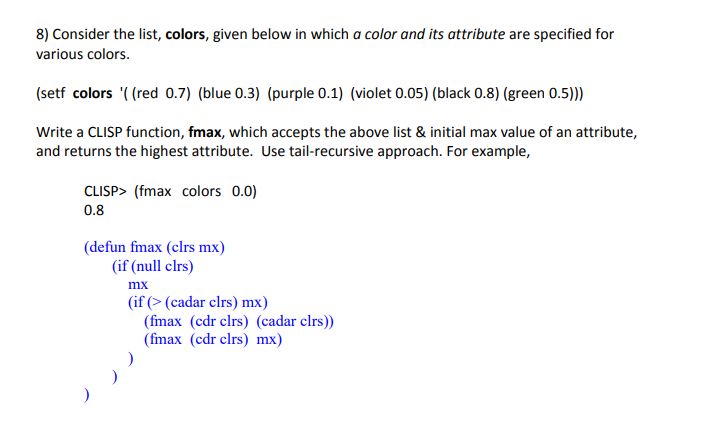Answered step by step
Verified Expert Solution
Question
1 Approved Answer
Hello, for the following problems the solutions are given in lisp. please help me understand the problem, and the solution. I understand neither. Please me
Hello,
for the following problems the solutions are given in lisp.
please help me understand the problem, and the solution. I understand neither. Please me help me figure out a way to approach these problems, I already tried writing some steps down but still don't understand how to try solving them.
thank you for your help in advance


Step by Step Solution
There are 3 Steps involved in it
Step: 1

Get Instant Access to Expert-Tailored Solutions
See step-by-step solutions with expert insights and AI powered tools for academic success
Step: 2

Step: 3

Ace Your Homework with AI
Get the answers you need in no time with our AI-driven, step-by-step assistance
Get Started


